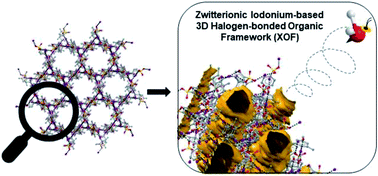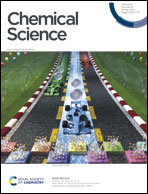Zwitterionic iodonium species afford halogen bond-based porous organic frameworks†
Abstract
Porous architectures characterized by parallel channels arranged in honeycomb or rectangular patterns are identified in two polymorphic crystals of a zwitterionic 4-(aryliodonio)-benzenesulfonate. The channels are filled with disordered water molecules which can be reversibly removed on heating. Consistent with the remarkable strength and directionality of the halogen bonds (XBs) driving the crystal packing formation, the porous structure is stable and fully preserved on almost quantitative removal and readsorption of water. The porous systems described here are the first reported cases of one-component 3D organic frameworks whose assembly is driven by XB only (XOFs). These systems are a proof of concept for the ability of zwitterionic aryliodonium tectons in affording robust one-component 3D XOFs. The high directionality and strength of the XBs formed by these zwitterions and the geometrical constraints resulting from the tendency of their hypervalent iodine atoms to act as bidentate XB donors might be key factors in determining this ability.



 Please wait while we load your content...
Please wait while we load your content...